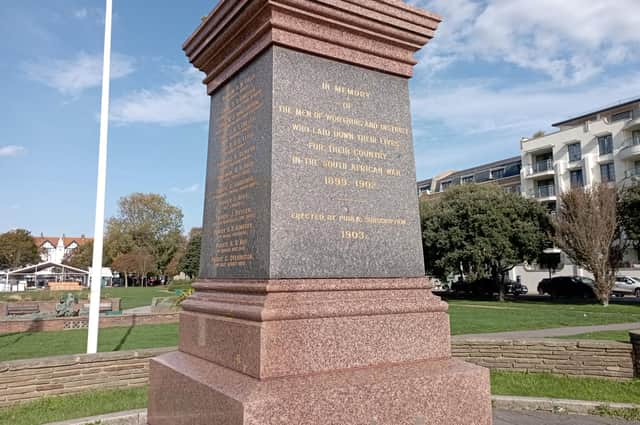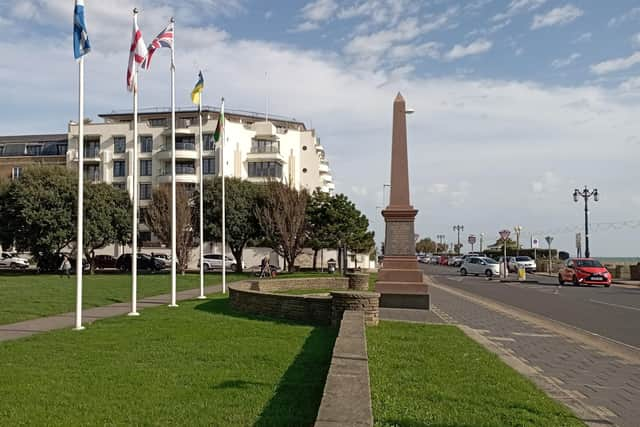‘Worthing war memorial must recognise black people and people of colour’


Conell Loggenberg expressed his concerns about the Steyne Gardens Boer War memorial at Worthing Borough Council’s full council meeting on Tuesday (October 18).
“Central to every function of the council is, and must be, that of equality,” Mr Loggenberg said. “In June, 2020, I wrote to council about my concern for the council’s poor, if not lack of, practical promotion of racial equality.
Advertisement
Hide AdAdvertisement
Hide Ad“At the time, I referenced the monument at Steyne Gardens, erected in 1903, a period in which any emphasis of importance pertaining to the lives of people of so-called black or coloured ethnicity was brazenly dismissed.


“Soldiers and others fighting on the British side were made to believe that they were fighting a noble cause, but they were misled; it was for commercial gain, for a very small minority.
“In this ruthless pursuit for commercial gain, was the careless loss of life of a people downrightly dismissed as unimportant, people who were labelled as black and coloured.
“So unimportant were they that many monuments erected in remembering the fallen do not even mention them. The monument in Steyne Gardens is a prime example.
Advertisement
Hide AdAdvertisement
Hide Ad“More than two years later, the awkward silence from council on this point stirs in me a rather unpleasant reminder of how people who look like me should remember their place, that they are unimportant, and do not deserve a mention on or by monuments.”
According to the National Army Museum, between 15,000 and 30,000 black Africans served under arms with the British Army as scouts and sentries during the 1899 to 1902 Boer War. A further 100,000 worked as labourers, transport drivers, blacksmiths, wheelwrights, farriers and builders. A number of Indian stretcher bearers and servants were also enlisted.
Boer families and black Africans were also confined in concentration camps by the British, where around 42,000 died.
Mr Loggenberg called on the council to ‘visibly and permanently’ recognise ‘people labelled as black and coloured’ who fought in the war with an inscription on or next to the existing monument.
Advertisement
Hide AdAdvertisement
Hide AdRita Garner, cabinet member for culture and leisure at Worthing Borough Council, said: “This administration is committed to be a listening, community-first council. As part of this we want to support and celebrate the cultural diversity of our town. The community cohesion group will be restarted after November this year.
“I will ensure that this issue is part of the working group’s scope, and that we seek local and expert views on how to respectfully acknowledge all those who served in conflicts of the past.”
Mr Loggenberg said this reply reminded him of the ‘platitudes’ he had heard before but Ms Garner said she would commit to a display.